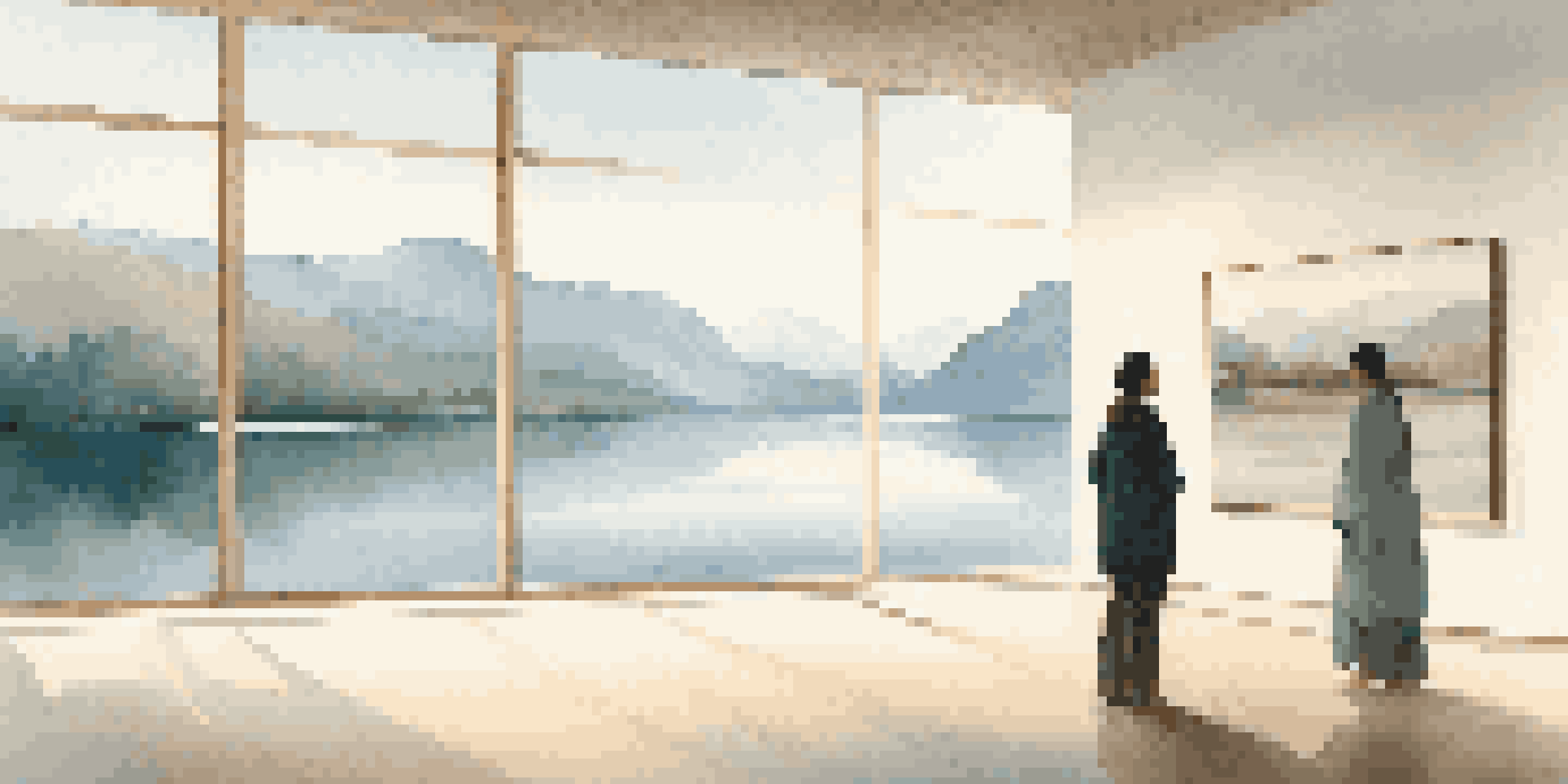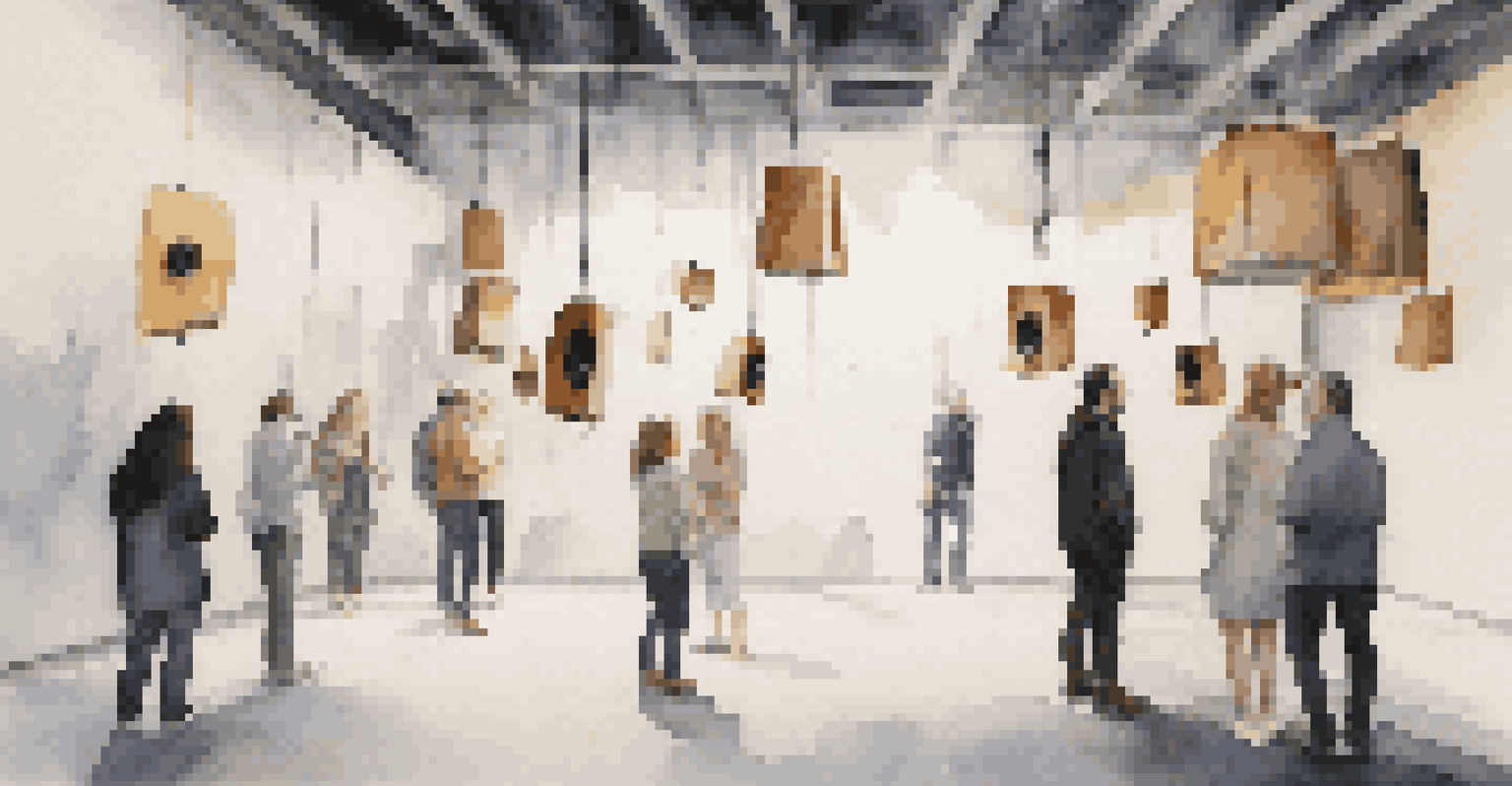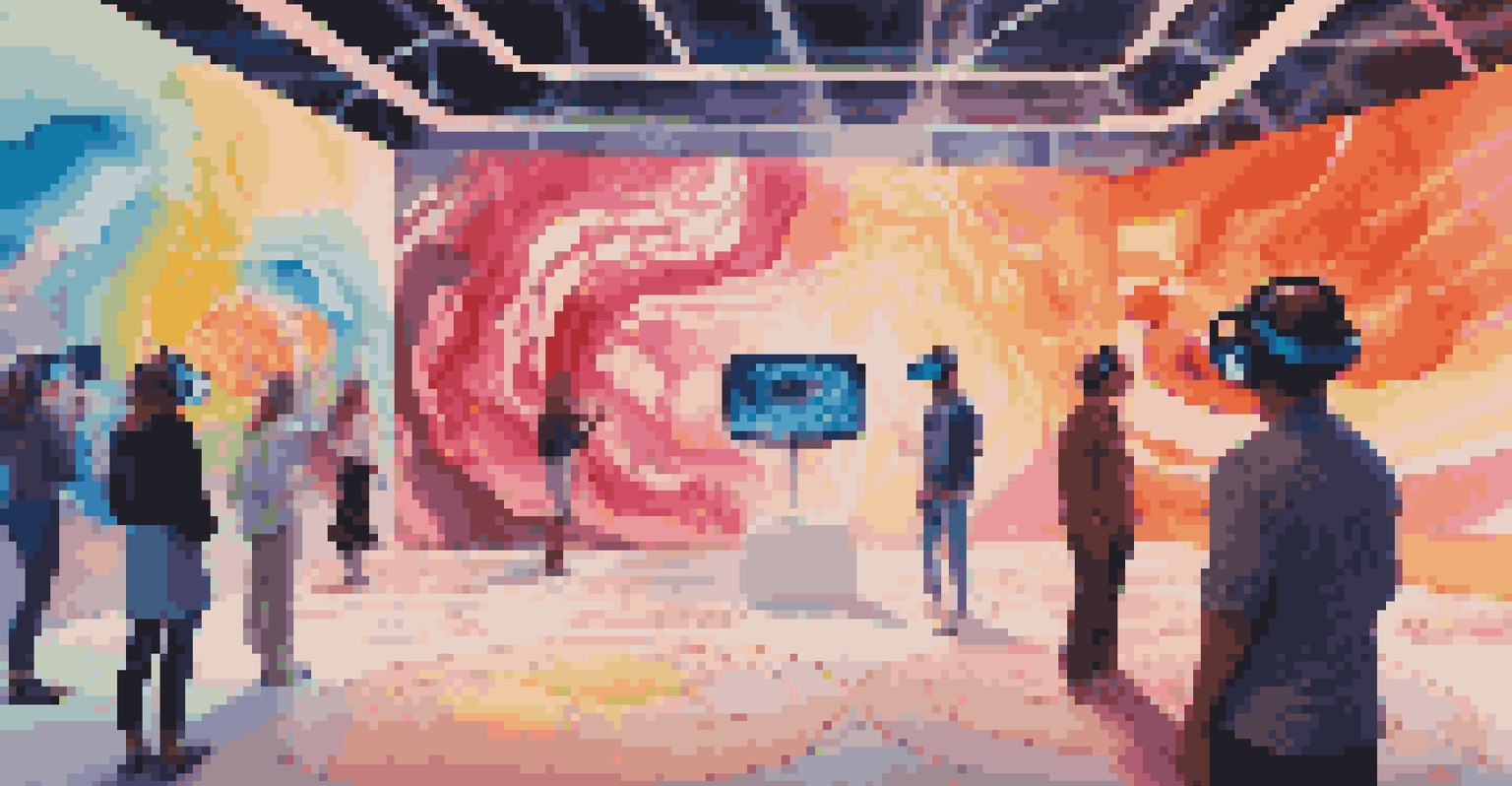The Experience of Sound: Exploring Auditory Perception in Art

Understanding Auditory Perception in Art
Auditory perception is all about how we interpret sounds around us, and it's a fascinating field when applied to art. It's not just about hearing; it’s about how sound influences our emotional experience and understanding of an artwork. Just like colors can evoke feelings, sounds can create atmospheres and tell stories. Artists have long recognized this interplay between sound and visual elements, making it a rich area for exploration.
Art is the most beautiful of all lies; it is the art of not seeing what is there, but hearing what is not.
For instance, think of a gallery that features a serene landscape painting while soft, calming music plays in the background. The music heightens our appreciation of the painting, enhancing the emotional connection we feel. This synergy between auditory and visual elements invites us to engage more deeply with the artwork. By understanding auditory perception, we can appreciate art in a multi-dimensional way.
Moreover, artists often experiment with sound as a medium itself, blurring the lines between visual art and auditory experiences. This intersection creates a unique dialogue that invites viewers to interact with art on multiple sensory levels. The experience becomes not just visual or auditory, but a holistic engagement that can shift our perceptions entirely.
The Role of Sound in Artistic Expression
Sound plays a pivotal role in artistic expression, allowing artists to convey emotions and messages that visuals alone may not capture. Take, for example, a performance art piece where the artist uses their voice, ambient sounds, or even silence to express a narrative. These audio elements can add layers of meaning, making the experience more profound for the audience.

Consider how a sound installation can transform a space, creating an immersive environment that alters our perception of the artwork. For instance, an installation with echoing sounds might evoke feelings of nostalgia or loss, while vibrant, rhythmic sounds can inspire joy and energy. This manipulation of sound allows artists to guide our emotional responses and create a more engaging experience.
Sound Enhances Artistic Experience
Auditory elements can heighten emotional connections and deepen our engagement with visual art.
In essence, sound becomes a language of its own, enriching the visual narrative and inviting audiences to explore their emotional landscapes. Through sound, artists can communicate complex themes and ideas that resonate with listeners on a personal level. This reinforces the notion that art is not just seen but also felt in ways that transcend traditional boundaries.
Exploring Soundscapes in Contemporary Art
Contemporary artists are increasingly incorporating soundscapes into their works, creating environments that engage the audience's auditory senses. A soundscape is essentially a sonic environment that can evoke a sense of place or mood, often crafted from a mix of natural sounds and human-made noises. This approach allows for a more immersive experience, as visitors are enveloped in a sonic world that complements the visual elements.
Sound is the vocabulary of nature; it is not what you see, but what you hear that shapes our understanding of the world.
Take a walk through an art installation where recorded sounds of nature blend seamlessly with urban noises. This juxtaposition can provoke thoughts about the relationship between nature and city life, highlighting contrasts in our modern existence. By engaging with soundscapes, we become aware of the auditory stimuli that often go unnoticed in our daily lives, prompting a deeper reflection on our surroundings.
Furthermore, soundscapes can serve as a powerful storytelling tool, guiding us through a narrative without relying solely on visuals. They invite us to listen closely, to pay attention to nuances, and to connect with the themes presented in the artwork. This multi-sensory experience not only enriches our understanding but also fosters a stronger emotional connection to art.
The Fusion of Sound and Visual Art Forms
The fusion of sound and visual art forms is a captivating trend that has gained traction in recent years. Artists are exploring how these two mediums can complement each other, creating hybrid experiences that challenge traditional boundaries. By integrating sound into visual art, artists can craft narratives that unfold in dynamic and unexpected ways.
For example, a painter might incorporate sound elements into their exhibition, where each brushstroke is accompanied by a corresponding sound. This integration not only enhances the visual experience but also creates a dialogue between the two forms. Visitors find themselves not just looking at art but also listening to it, leading to a richer, more interactive encounter.
Soundscapes Create Immersive Art
Contemporary artists are using soundscapes to craft environments that engage audiences on multiple sensory levels.
This blend stimulates our senses and encourages us to think critically about how we perceive art. It opens up new avenues for expression and allows for innovative storytelling techniques that can resonate with diverse audiences. In this way, the fusion of sound and visual art forms challenges us to expand our understanding of creativity.
The Psychological Impact of Sound in Art
Sound can have profound psychological effects on our perception of art, influencing our emotions and thoughts in subtle yet significant ways. Research shows that certain types of music or sound can trigger specific emotional responses, which artists can harness to enhance their work. For instance, a piece accompanied by dissonant sounds might evoke feelings of discomfort or tension, while harmonious sounds can evoke serenity.
This psychological dimension of sound allows artists to manipulate the viewer's experience intentionally. Imagine walking through an art gallery where the sounds shift according to the themes of each artwork—a soothing melody for serene landscapes and intense beats for more dynamic pieces. This thoughtful integration can deepen our emotional engagement with the art, making the experience more memorable.
Understanding the psychological impact of sound encourages both artists and audiences to reflect on how sound influences our interpretations. It raises questions about why we feel certain ways in response to specific sounds and how these feelings can shape our understanding of art. This interplay between sound and psychology enriches the overall experience, making it a vital aspect of artistic expression.
Cultural Significance of Sound in Art
The cultural significance of sound in art cannot be overlooked, as it often reflects the identity and values of a community. Different cultures have unique relationships with sound, which can be expressed through various artistic mediums. For example, traditional music and storytelling are often intertwined, revealing cultural narratives and histories that resonate deeply within communities.
When artists incorporate cultural sounds into their works, they create a dialogue that honors and preserves those traditions. This can be seen in installations that feature indigenous sounds or music from specific regions, enabling audiences to connect with experiences outside their own. Such artistic expressions foster appreciation and understanding of diverse cultures, enriching the broader artistic landscape.
Cultural Sound Reflects Identity
Integrating cultural sounds into art fosters appreciation and understanding of diverse communities and their narratives.
Moreover, the cultural significance of sound can serve as a form of resistance or commentary on societal issues. Artists might use sound to challenge norms, provoke thought, or inspire change, making their work not only a reflection of culture but also a vehicle for social dialogue. This highlights how sound in art transcends mere auditory perception and becomes a powerful tool for cultural expression.
Future Trends: Sound and Art Integration
As technology advances, the integration of sound and art is set to evolve in exciting ways. Virtual reality (VR) and augmented reality (AR) are already reshaping how we experience art, allowing for immersive environments that engage multiple senses. Imagine stepping into a virtual gallery where the art responds to the sounds you make or where soundscapes change based on your movements.
This technological integration opens up new possibilities for artists to experiment with sound in innovative ways. Artists can create interactive experiences that respond to audience participation, blurring the lines between creator and spectator. Such developments promise to redefine our understanding of art, making it a more collaborative and engaging experience.

Looking ahead, the future of sound in art holds endless potential. As artists continue to explore this rich terrain, we can anticipate new forms of expression that challenge and inspire us. By embracing these trends, we can appreciate the evolving relationship between sound and art, ensuring that our experiences remain fresh, dynamic, and deeply impactful.